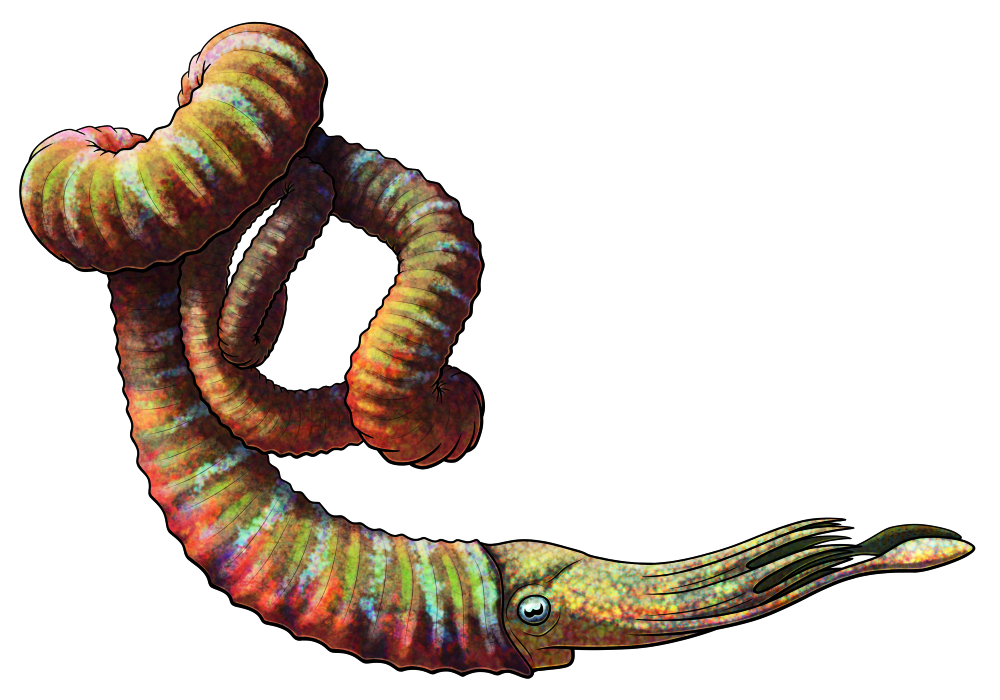Most ammonites had spiral-coiling shells, but during the Cretaceous a group known as the heteromorphs evolved a much weirder range of forms. Some were straightened, some were hooked, some had helical snail-like shapes, and some even ended up bearing a strange resemblance to paperclips.
But one of the most bizarre of all was the genus Nipponites, whose ribbed shell looked like a bundle of tangled asymmetrical coils.
Nipponites bacchus lived in what is now Hokkaido, Japan, during the late Cretaceous about 90 million years ago. Around 10cm long (~4″), its shell was less tightly coiled up than its better-known relative Nipponites mirabilis, but these looser whorls were formed in the same way via a series of U-bends in different directions during its growth.
Despite their irregular and ungainly appearance, the unique shape of these ammonites seems to have actually been very hydrodynamically stable. They weren’t fast-moving, but they didn’t need to be, probably spending most of their time floating suspended in the water column catching small planktonic prey from around themselves.

